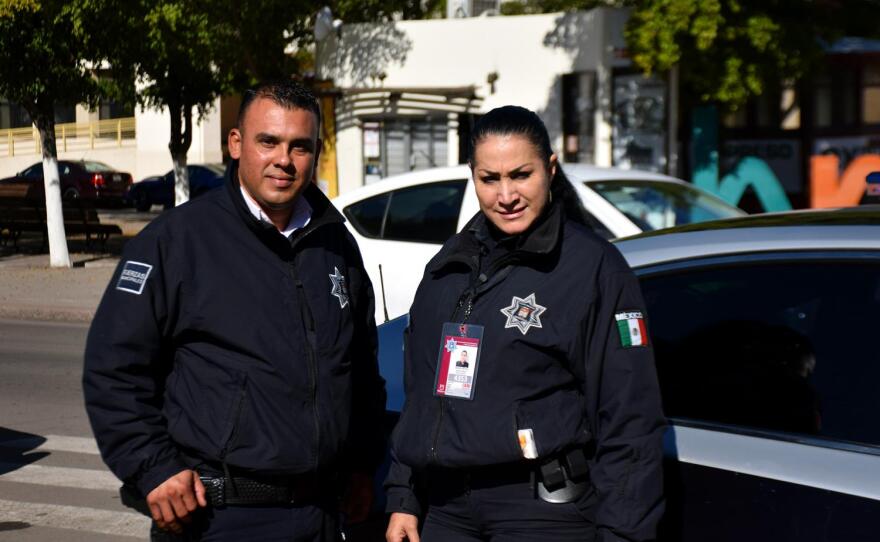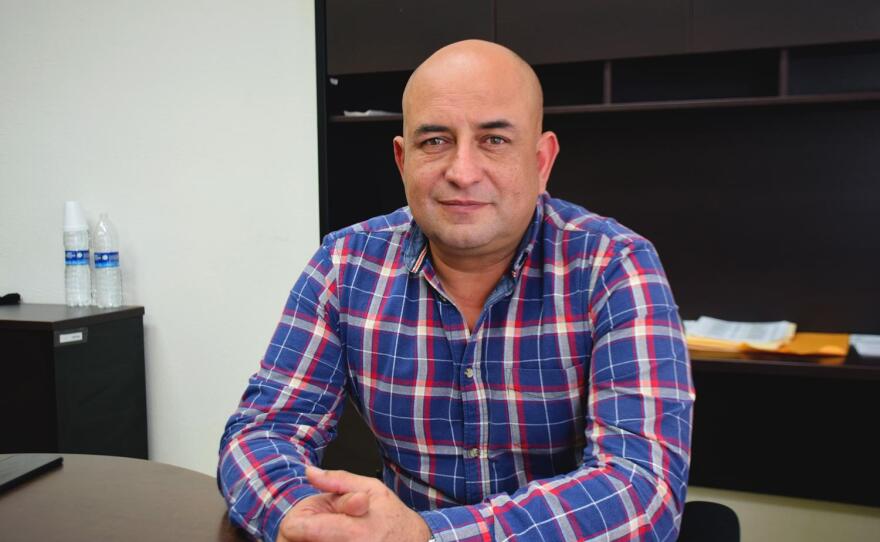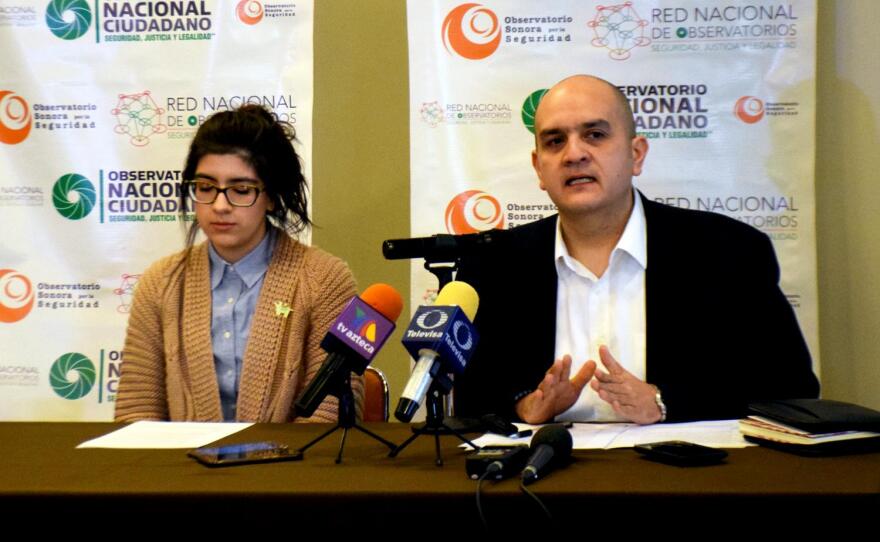Hermosillo police Officers Cristina Garcia and Luis Angel Moreno hop into a patrol car on a brisk January morning.
As they head out onto the streets of Hermosillo, Moreno’s radio starts beeping — there’s been a car accident near the city center.
“It’s like this all day,” Garcias said as Moreno responded to the call.
Their job keeps them on their toes. And Garcia — who’s been on the force for 23 years and is now director of preventative policing — loves it.
“We take care of people,” she said. “We take care of their businesses, their security. We take care of their children, and we neglect our own.”

Police officers know their job can be dangerous, and they’re willing to take the risk, she said. But as a mother of two and grandmother of three, she knows her family worries about her.
“The truth is, we stop being normal people when we become police,” she said. “And for our family, that’s accompanied daily by anxiety: ‘Am I going to see my mom again?’ And for my granddaughters, ‘My nanita, will I see her again?’”
Those worries have only amplified as police killings in Sonora more than doubled from 11 in 2018 to 23 last year.
Coupled with low pay, scant resources and suspicions of internal corruption, the killings have led to dwindling morale among some Sonoran police.
Perhaps the hardest hit is the coastal municipality Guaymas.
The Case Of Guaymas
A wave of police killings started in October 2018, when five officers were killed in a brutal attack that stunned the city.
Within nine months, nine police officers and two security officials were killed in Guaymas. This January, another was shot in his home and left in critical condition.
“More than 40 people have resigned, and I can tell you that the majority have said their reason is fear,” said Guaymas Mayor Sara Valle.
The resignations only compound an existing shortage in police in Guaymas and across Sonora.
Mexico’s Defense Secretary Luis Sandoval said in August that there was a 40% deficit in Sonoran police.
In Guaymas alone there are at least 70 unfilled positions, Valle said. And fear among the diminished police force makes everyone less safe.
In one highly publicized case last June, a woman called the police to report that she’d been mugged. She started recording the conversation after she was told no one would be coming to her aid.

“Be sane,” the dispatcher told her. “The police who are still alive are helpless, and nobody wants to work.”
Just days earlier, four police officers were attacked in an ambush, leaving one dead.
“No one wants problems,” the dispatcher continued. “They’re killing us.”
But Valle admits, it’s not just fear. Corruption is also part of the problem, especially because police have spent years working with low pay and few resources.
“And then the ranks of organized crime come and offer money, and, well, then there are problems, no?” she said.
The federal government has said infiltration by organized crime is a problem in many police forces in Sonora and around the country. So last fall, Security Secretary Alfonso Durazo announced he was turning to military professionals to head a “pilot program” to purge and professionalize police in Sonora. And in September, military leaders were installed in five Sonoran municipalities.
In Guaymas, that’s Naval Captain Luis Alberto Cano.
“I can’t cover the sun with a finger,” Cano said, during an interview late last year, about three months into his tenure. “I know that high impact crimes are really strong right now.”

Since he took his post, violent crimes have continued to rise in Guaymas. But he said that’s why he’s there: to provide military backing for police who have been understaffed and under attack. And to take out organized crime — both inside the police force and out.
“We’re here to hit, to deal operational blows against organized crime,” he said.
‘Which Police Do We Want?’
But some worry about increasing militarization.
“The question is, ‘Which police do we want?’” said Emilio Hoyos, who leads Observatorio Sonora por la Seguridada, a Sonoran citizens group focused on public safety. “I think we have to start by asking ourselves that question.”
Hoyos advocates for a systematic approach to identifying and solving problems within police forces, something he says isn’t being down in Sonora right now.
“There is not a single diagnosis of any municipal police force of how it’s functioning and what is the best route to fix the police,” he said.
There has been a push in Sonora to vet officers using a confidence exam. But across the state only 64% of police have passed the tests. About 25% of police failed, and another 11% have yet to be evaluated.

And Hoyos argued that the exam isn’t the right measure to assess and improve Sonora’s police. For one thing, it’s too often used by higher-ups as a punishment for officers they don’t like or want out, he said. And it doesn’t address underlying problems that are leaving police unprepared and susceptible to corruption.
“No matter how many committed police we have, they’ll be hard-pressed to protect us if they don’t have the essentials to carry out their work,” he said.
Instead, Hoyos is pushing for greater transparency in police operations and funding. Because despite millions of pesos being allocated for security in recent years, Hoyos said, police salaries are still low, equipment and infrastructure are inadequate and the public doesn’t know how funds are being spent.
Back in the patrol car in Hermosillo, Garcia said she welcomes police reforms, including military leadership and greater oversight.
“Change is good,” she said. “If we’re doing things right, we have nothing to be afraid of.”
But as violent attacks on police and security forces continue in Sonora, the question remains: will those changes be enough to keep cops, and the public, safe?






